
Special Sessions
IEEE Women in Engineering (WIE) event Sunday evening, September 12, 2021,
6:45 pm – 8:15 pm (Pacific Time)
This year IEEE Women in Engineering Virtual Event will be held at 6:45 pm on September 12th. Attend this session to ask questions and discuss the life in science and engineering with professionals from research labs and academia.
Chair: Viktoriya Golovkina
(Prism Computational Sciences, Inc.)
Panelists for the ICOPS 2021 WIE Event
Chunqi Jiang
Associate Professor, Old Dominion University
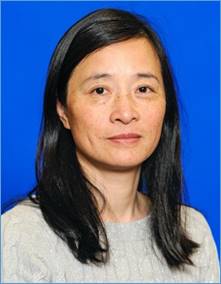 Dr. Chunqi Jiang is affiliated with both the Center for Bioelectrics and the Electrical and Computer Engineering Department at ODU. She received her B.S. from the Changchun Institute of Optics and Fine Mechanics, China in 1995, an M.S. from the University of Electronic Science and Technology of China in 1998, and a Ph.D. from Old Dominion University (ODU), USA in 2002.
Dr. Chunqi Jiang is affiliated with both the Center for Bioelectrics and the Electrical and Computer Engineering Department at ODU. She received her B.S. from the Changchun Institute of Optics and Fine Mechanics, China in 1995, an M.S. from the University of Electronic Science and Technology of China in 1998, and a Ph.D. from Old Dominion University (ODU), USA in 2002.
Dr. Chunqi Jiang research interests include compact pulse power and pulsed low-temperature plasma sources and their applications for environmental and biomedical fields. Her research has been funded by DoD, DoE, NIH and the private sector. Dr. Jiang has published more than 60 research papers, 6 book chapters, and holds one patent. As an IEEE NPSS member for over 20 years, she served in the technical committee for numerous IEEE Plasma and Pulse Power Conferences. Recently, Chunqi Jiang was the technical program co-chair for the 2019 PPPS conference. In addition, she served as a Guest Editor for special issues of IEEE Transactions on Plasma Science, as well as a special issue of Plasma Research Express. Dr. Chunqi Jiang was elected as a voting member to serve on the IEEE Pulsed Power Science and Technology Committee in 2017.
Maria Pia Valdivia
Associate Research Scientist at Johns Hopkins University and Associate Project Scientist at University of California San Diego
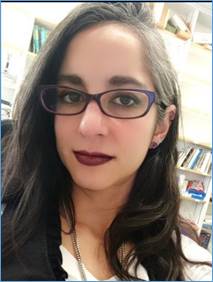 Dr. Pia Valdivia is an Associate Research Scientist in the Department of Physics and Astronomy at the Johns Hopkins University (JHU) and an Associate Project Scientist at the Center for Energy Research, University of California San Diego.
Dr. Pia Valdivia is an Associate Research Scientist in the Department of Physics and Astronomy at the Johns Hopkins University (JHU) and an Associate Project Scientist at the Center for Energy Research, University of California San Diego.
Dr. Valdivia received her PhD in Exact Sciences from Pontificia Universidad Catolica de Chile in 2011 and her B.S. in Physics in 2007. In the Plasma Spectroscopy and X-ray Imaging group at JHU she has participated in the development and deployment of High Energy Density (HED) X-ray imaging diagnostics for high-intensity laser (LULI2000, MTW, and Omega EP) and pulsed-power systems (Llampudken and GenASIS). She is a member of the JLF (Jupiter Laser Facility) Executive Committee and Vice-Chair of the OLUG (Omega Laser Users Group) Executive Committee. Her current research interests include the study of dynamics and radiation emission of HED plasmas and the development of advanced x-ray Phase-Contrast imaging diagnostics in addition to Physics Education Research and Science Outreach.
Dr. Evdokiya (Eva) Kostadinova
Assistant Professor, Auburn University
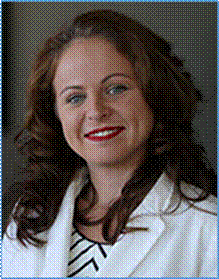 Dr. Kostadinova works as an Assistant Professor at Auburn University’s Department of Physics. She is the chair of Coalition of Plasma Science (CPS), executive committee member of the APS Forum for Early Career Scientists, and a member of several APS Division of Plasma Physics committees.
Dr. Kostadinova works as an Assistant Professor at Auburn University’s Department of Physics. She is the chair of Coalition of Plasma Science (CPS), executive committee member of the APS Forum for Early Career Scientists, and a member of several APS Division of Plasma Physics committees.
Dr. Kostadinova obtained her B.S. in Physics and a B.S. in Political Science from Furman University in 2014. She received her Doctoral degree in Physics in 2017 from Baylor University. The focus of her dissertation was employing new mathematical techniques in the study of energy transport in two-dimensional disordered systems. Her dissertation work received a Springer award for outstanding PhD research, which led to her publishing a book by Springer Nature, titled Spectral Approach to Transport Problems in Two-Dimensional Disordered Lattices. Kostadinova’s primary research interests lie along the intersections of fundamental physics and applied mathematics. Those include anomalous diffusion in disordered media with nonlocal interactions, self-organization and stability of dusty plasmas in gravity and microgravity, and the thermodynamics of driven-dissipative systems. Specific current projects include studying the dynamics of dusty plasmas in the Plasmakristall-4 facility on board the International Space Station and developing a spectral approach to semi-classical turbulence in dusty plasmas. Most recently, her portfolio of projects has expanded to include topics related to magnetic fusion confinement, lunar dust mitigation techniques, and material ablation in extreme plasma conditions.
Dr. Arianna
Gleason-Holbrook
Staff Scientist at SLAC National Accelerator Laboratory and Adjunct Faculty at Stanford University
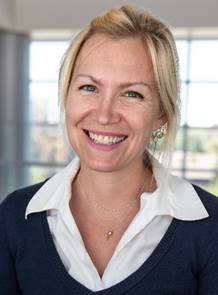 Dr. Arianna Gleason is a Staff Scientist in the Fundamental Physics Directorate at the SLAC National Accelerator Laboratory and Adjunct Faculty in the Geological Science Department, Stanford University, where she focuses on dynamic mesoscale materials properties.
Dr. Arianna Gleason is a Staff Scientist in the Fundamental Physics Directorate at the SLAC National Accelerator Laboratory and Adjunct Faculty in the Geological Science Department, Stanford University, where she focuses on dynamic mesoscale materials properties.
She obtained her Ph.D. from the University of California, Berkeley in 2010 working on high pressure mineral physics and planetary sciences. She was the Frederick Reines and Director’s Postdoctoral Fellow at the Los Alamos National Laboratory from Shock and Detonation Physics 2014 - 1018. Dr. Gleason’s research spans from geo- and planetary sciences to fusion energy research by applying ultrafast X-ray probes to dynamic materials processes. She recently received the DoE’s Early Career Award in 2019 from the Office of Science, Fusion Energy Science.
“Exploring the Universe from Nevada”
Event on Wednesday evening
September 15, 2021
6:00 – 7:30 pm (Pacific Time)
Join an Astrophysicist and the Director of the Fleischmann Planetarium for a virtual visit to the Planetarium. Discover how they are helping participants of all ages explore the universe. This event includes a quick tour, a preview of a planetarium show, and live connections to robotic, remotely-controlled telescopes — such as the Great Basin Observatory — that the Planetarium uses to help guests worldwide research galaxies, double stars and extrasolar planets.
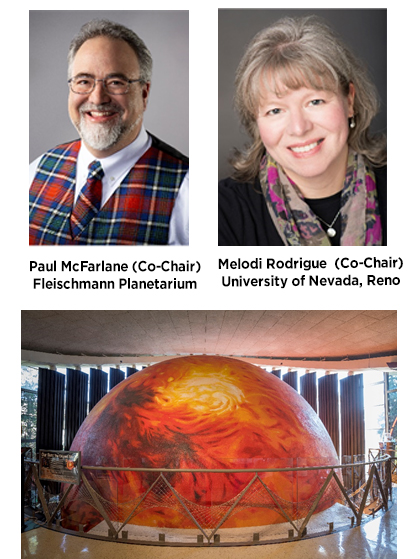
IEEE ICOPS 2021 Career Fair information:
Employers:
Conference registrants or exhibitors who indicate an interest in participating in the career fair as employers are asked to submit job descriptions and a pdf or image file with company logo to jenniferelle@afrlnewmexico.com by August 31st. These job descriptions will be posted on an invite only google drive for job seekers to peruse prior to the conference.
The interactive career fair Monday Sept. 13 from 1-3 PT will be hosted in gathertown. Please plan to be available for job seeker interactions during this time.
Job seeker resumes will be available on invitation only google drive Sept 3, please contact career fair chair if you have not received an access invitation by that date.
Gathertown spaces will be available Tues. Sept. 14 and Wed. Sept 15 for one-on-one interviews with job seekers. Please set up interviews with job seekers during the interactive session Monday, or using resume contact information.
Employees:
Please submit a resume or CV and optional one minute self-promotion video to jenniferelle@afrlnewmexico.com by Sept 1. DO NOT include SS#, birthdate, or other sensitive personally identifiable information on resume. DO include a contact phone number and/or email. Resumes will be posted on an invite only google drive for employers to peruse prior to the conference.
An employer list and job descriptions will be posted on google drive by Sept 3. Please contact career fair chair if you have not received an access invitation by that date.
Monday from 1-3 PT job seekers are strongly encouraged to interact with employers in an informal gathertown environment. A map will be provided if you want to seek out specific employers.
Tuesday and Wednesday interviews are reserved by employer request.
Career fair chair contact information:
Dr. Jennifer Elle jenniferelle@afrlnewmexico.com
ICOPS 2021 Young Professionals Event
Career stories of professional plasma scientists in industry and the national labs
Please join us to hear about the career journeys of three outstanding professional plasma scientists, and to ask questions about how they came to their current positions and what lessons they learned along the way.
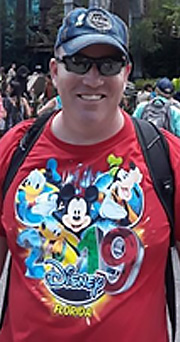 William M. White received BSEE (1998) and MSEE (2000) degrees from the University of New Mexico, and a PhD (2006) in Nuclear Engineering from the University of Michigan. Dr. White was enlisted for six years in the New Mexico Air National Guard (NMANG) and has worked as a contractor and civilian at the Air Force Research Laboratories (AFRL) where he worked in high power microwaves, pulsed power, charged particle beams, intense radiation sources, and ultra-short pulse lasers. In 2015 he joined the technical staff at Sandia National Laboratories (SNL). During his time at SNL he worked on the Z Machine in pulsed power operations before being promoted to manager of the newly formed Pulsed Power and Data Systems Operations department on Z. In July of 2019 he left SNL and moved to Verus Research in Albuquerque, NM as a Senior Experimental Physicist, and is now the Team Lead for Applied Electromagnetics.
William M. White received BSEE (1998) and MSEE (2000) degrees from the University of New Mexico, and a PhD (2006) in Nuclear Engineering from the University of Michigan. Dr. White was enlisted for six years in the New Mexico Air National Guard (NMANG) and has worked as a contractor and civilian at the Air Force Research Laboratories (AFRL) where he worked in high power microwaves, pulsed power, charged particle beams, intense radiation sources, and ultra-short pulse lasers. In 2015 he joined the technical staff at Sandia National Laboratories (SNL). During his time at SNL he worked on the Z Machine in pulsed power operations before being promoted to manager of the newly formed Pulsed Power and Data Systems Operations department on Z. In July of 2019 he left SNL and moved to Verus Research in Albuquerque, NM as a Senior Experimental Physicist, and is now the Team Lead for Applied Electromagnetics.
 Dr. Cami Collins is an experimental plasma physicist and leader of the Advanced Tokamak Physics Group at Oak Ridge National Laboratory. Cami received her B.S. in physics from Montana State University Bozeman in 2007 and her Ph.D. in 2013 from the University of Wisconsin Madison. As an undergraduate, she participated in the National Undergraduate Fellowship Program in Plasma Physics and Fusion Energy Sciences. As a graduate student, she was awarded the U.S. DOE Fusion Energy Sciences Graduate Fellowship. She was the recipient of the 2015 APS Marshall N. Rosenbluth Outstanding Doctoral Thesis Award for her work in laboratory plasma astrophysics. Cami then completed a postdoc through the University of California Irvine at the DIII-D National Fusion Facility. She became a staff scientist at General Atomics in 2016, specializing in spectroscopy diagnostics and energetic particle physics, before joining ORNL in 2020. She is a member of the APS-DPP executive committee and regularly engages in fusion outreach, with specific interest in recruitment and retention of women in fusion energy careers.
Dr. Cami Collins is an experimental plasma physicist and leader of the Advanced Tokamak Physics Group at Oak Ridge National Laboratory. Cami received her B.S. in physics from Montana State University Bozeman in 2007 and her Ph.D. in 2013 from the University of Wisconsin Madison. As an undergraduate, she participated in the National Undergraduate Fellowship Program in Plasma Physics and Fusion Energy Sciences. As a graduate student, she was awarded the U.S. DOE Fusion Energy Sciences Graduate Fellowship. She was the recipient of the 2015 APS Marshall N. Rosenbluth Outstanding Doctoral Thesis Award for her work in laboratory plasma astrophysics. Cami then completed a postdoc through the University of California Irvine at the DIII-D National Fusion Facility. She became a staff scientist at General Atomics in 2016, specializing in spectroscopy diagnostics and energetic particle physics, before joining ORNL in 2020. She is a member of the APS-DPP executive committee and regularly engages in fusion outreach, with specific interest in recruitment and retention of women in fusion energy careers.
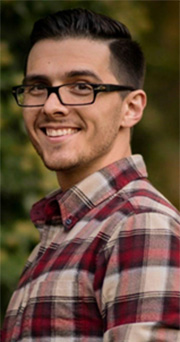 Dr. Emil E. Petkov started his college journey in 2006 as a biochemistry major at the University of Nevada, Reno (UNR), with the intentions of going to medical school. During his senior year, he switched career paths and decided to pursue a PhD in physics. He declared a second major in physics and completed both degrees in 2012. He began his PhD at UNR in August 2012 and focused on plasma physics, with an emphasis on theoretical modeling of x-ray line radiation from various pulsed power sources. In 2015, he was awarded an NSF EAPSI fellowship and spent 2 months at Nanyang Technological University in Singapore working on experimental and theoretical modeling of a 3 kJ dense plasma focus (DPF) device. In June 2018, he started working as a Karle’s Fellow at the Naval Research Laboratory (NRL). During his time at NRL, he worked on x-ray line polarization experiments from a DPF, and also worked on the development of a magnetic sublevel kinetics code to complement experimental results. In November 2020, he began working at L3Harris as a physicist and currently works on R&D of next generation pulsed power devices. He has been a member of the IEEE since 2012.
Dr. Emil E. Petkov started his college journey in 2006 as a biochemistry major at the University of Nevada, Reno (UNR), with the intentions of going to medical school. During his senior year, he switched career paths and decided to pursue a PhD in physics. He declared a second major in physics and completed both degrees in 2012. He began his PhD at UNR in August 2012 and focused on plasma physics, with an emphasis on theoretical modeling of x-ray line radiation from various pulsed power sources. In 2015, he was awarded an NSF EAPSI fellowship and spent 2 months at Nanyang Technological University in Singapore working on experimental and theoretical modeling of a 3 kJ dense plasma focus (DPF) device. In June 2018, he started working as a Karle’s Fellow at the Naval Research Laboratory (NRL). During his time at NRL, he worked on x-ray line polarization experiments from a DPF, and also worked on the development of a magnetic sublevel kinetics code to complement experimental results. In November 2020, he began working at L3Harris as a physicist and currently works on R&D of next generation pulsed power devices. He has been a member of the IEEE since 2012.
